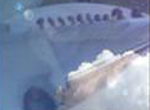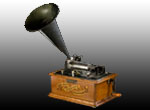xysoom


Registrato: Mag 15, 2020
Messaggi: 1676
|
 Oggetto: Home first-aid kits: what's essential and how to get it for Oggetto: Home first-aid kits: what's essential and how to get it for
Inviato: 04-11-2022 3:02:24 |
 |
Home first-aid kits: what's essential and how to get it for less
Having the right kit can help you to act quickly when you need to treat minor illnesses, ailments or injuries in the home – or for more serious issues, to bide the time until emergency help arrives.To get more news about [url=https://www.rusuntacmed.com/]IFAK[/url], you can visit rusuntacmed.com official website.
However, buying a pre-packed first-aid kit is unlikely to be the best option, as you may end up paying out for unnecessary items, lack others or find yourself short of handy essentials.
We asked two pharmacists for their tips on which first-aid products are really useful, the ones you don't need, and how to build a first-aid kit that's tailored to you. Plus, we've looked into how to get what you need for less to help you compile your own first-aid kit on the cheap.
While they might come in a handy storage bag or box, shop-bought first-aid kits often contain supplies you're never likely to need, and not enough of the ones you do.
Buying an empty first-aid container case (or indeed, a cheap make-up/toiletries bag or lunch box that you can label) and filling it yourself means you can adapt it to your needs and lifestyle, and avoid paying for unnecessary extras.
Make sure it's easily identifiable as a first aid kit, and keep it out of the reach of small children.
Pre-made first-aid kits often contain things such as foil blankets, eye wash sachets, ice packs and burn gel – items you're either unlikely to have much use for at home, or for injuries that can be easily treated in other ways.
What's missing from pre-made first-aid kits?
You won't usually find hydrocortisone cream (mild steroid cream), antihistamines, tweezers (for getting out splinters) and pain relief medication.
You may also want to include anti-diarrhoea medication such as loperamide, says pharmacist Michael Line. Rehydration salts aren't usually necessary (aside from children or vulnerable/elderly people, who may become dehydrated more quickly) and you can make your own solution with a bit of sugar and salt dissolved in water.
Some shop-bought first-aid kits only contain around 20 sticking plasters, which won't last long if you have kids and are constantly dressing cuts and scrapes (particularly as they are usually assorted sizes, so only a small handful will be a decent size).
Buying them separately also means you can choose which kind you prefer: for example, specific sizes or strips, hard-wearing or waterproof ones – or plasters to suit different skin shades. It also means you can avoid those that might be unsuitable, such as if you're allergic to fabric plasters.
Pharmacies and supermarkets often have multi-buy offers on these products, so you can buy an array of options to bulk out your selection and suit different scenarios.
A bottle of water can be handy, particularly if you're venturing outdoors, for taking medication, cleansing wounds or getting grit or dirt out of eyes.
If you're treating a cut or wound, the NHS recommends rinsing it under drinking-quality tap water or cleaning with sterile wipes, but Michael Line says that a bottle of water can be a handy alternative if these aren't around – for example, if you're administering first aid for grazed knees on the pavement.
Clare Morrison, Royal Pharmaceutical Society director for Scotland, also suggests including a 300mg aspirin tablet in your kit. This is sometimes recommended for people with a suspected heart attack (only when directed by a medical professional) to take while waiting for an ambulance to arrive.
|
|
![Show/hide content [x]](themes/dragonfly/images/minus.png) Menu Principale
Menu Principale HOME
HOME NADA YOGA
NADA YOGA AMBIENTI SONORI
AMBIENTI SONORI VISUAL SOUND
VISUAL SOUND MUSICA LIVE
MUSICA LIVE INDIAN MUSIC
INDIAN MUSIC UTILITA'
UTILITA' AREA RISERVATA
AREA RISERVATA![Show/hide content [x]](themes/dragonfly/images/minus.png) Info Utente
Info Utente![Show/hide content [x]](themes/dragonfly/images/minus.png) Floating Sarod
Floating Sarod![Show/hide content [x]](themes/dragonfly/images/minus.png) Discografia
Discografia![Show/hide content [x]](themes/dragonfly/images/minus.png)
![Show/hide content [x]](themes/dragonfly/images/minus.png) Visite
Visite






